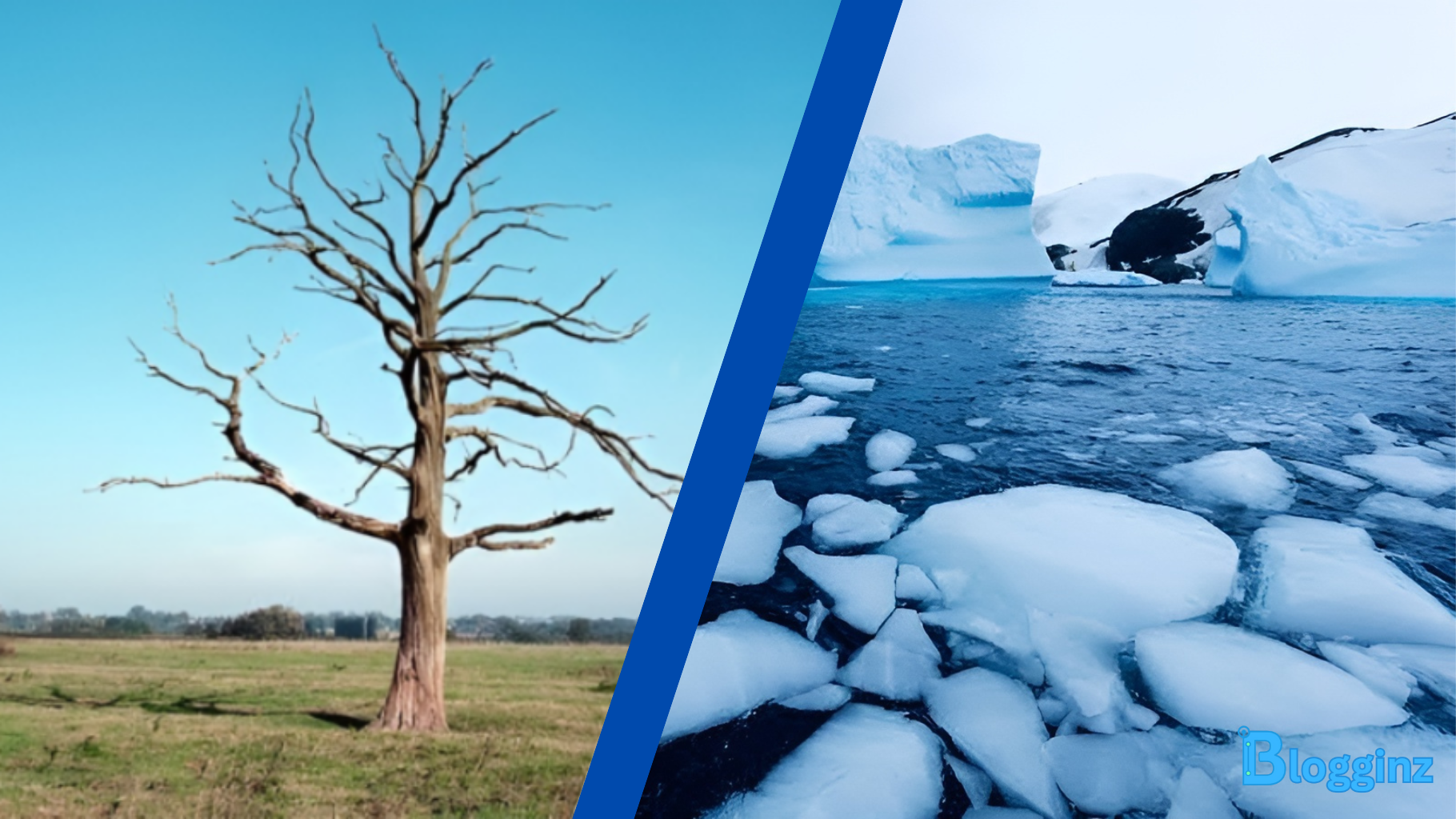The dangers caused by climate change are evident now, not in the future. The world is currently seeing its impacts. One of the most alarming and least discussed effects is how climate change impacts public health. From the upward march of temperatures and air pollutants to the surge in disease and mental health problems, there is no question that climate change and well-being are inextricably linked. In this week’s roundup, we look at the connection between climate change and human health, discuss major risks, and share the most vulnerable populations. Whether you worry about global warming or not, whether you are just curious or not, you will benefit from this blog.
What Is Climate Change?
The word “climate change” defines the profound and permanent shifts in the Earth’s atmosphere, hydrosphere, lithosphere, and biosphere that have been happening over an extended period. It’s mainly due to anthropogenic activities, particularly the combustion of fossil fuels, i.e., coal, oil, and gas. Consequently, a concentration of greenhouse gases, namely carbon dioxide (CO₂), is formed, which acts like a blanket wrapping the Earth, thus retaining heat and leading to global warming.
How Does Climate Change Affect Human Health?
Let’s break it down into specific ways that climate change impacts human health:
1. Increased Air Pollution
Air pollution is the most clear connection between climate change and human health; however, there are other connections as well. Hot temperatures can boost the production of ground-level ozone, which is a dangerous air pollutant that affects the lungs and aggravates respiratory illnesses like asthma and bronchitis. Furthermore, wildfires, which are more frequent and intensified due to climate change, generate vast quantities of smoke and fine particles that are released into the atmosphere without limit. The particles are so small that they can get to the lungs and even reach the blood, thus triggering heart and lung diseases of the most serious kinds.
Health effects from air pollution can be asthma attacks, lung infections, heart diseases, an increased risk of stroke, and early death of people with chronic illnesses.
2. Extreme Weather Events
Extreme weather is becoming increasingly severe nowadays. Heatwaves, floods, hurricanes, and droughts are increasing in both frequency and severity. This weather not only causes physical injuries but also affects access to clean water, food, and medical care.
Heatwaves have the potential to cause heat exhaustion, heatstroke, and dehydration, particularly among children, the elderly, and those with pre-existing conditions. Flooding has the potential to transmit waterborne diseases such as cholera and typhoid. Storms and hurricanes are known for their rapid and efficient potential in causing injuries, deaths, and long-term trauma. Droughts have been categorized as one of the main reasons for crop failures, which in turn, increases the risk of malnutrition. People living in poverty or places with poor infrastructure tend to be the most vulnerable and thus often the hardest hit.
3. Spread of Infectious Diseases
The changing climate influences ecosystems, and it also affects the habitats of certain insects, such as mosquitoes and ticks. These bugs are the sources of diseases like malaria, dengue fever, Zika virus, and Lyme disease. Higher temperatures help the bugs that carry diseases find places where they have not been able to live before. For instance, the regions that were formerly unsuitable for malaria-carrying mosquitoes due to the cold temperatures are now becoming appropriate for their survival and reproduction.
Diseases on the rise due to climate change are considered to be Malaria, dengue, Lyme disease, West Nile virus, and Zika virus.
This means new populations are at risk, especially in parts of Europe and North America where these diseases were once rare.
4. Food and Water Insecurity
Food and water availability and safety are impacted by climate change. Due to drought, unpredictable rain, and severe weather, farm products may not be enough. Rising ocean levels can pollute freshwater sources with salty water, thus reducing the amount of drinking water available for use. Lack of food can cause not only undernourishment but also undernutrition, especially in poor countries. Also, hot weather changes can make food go bad more quickly and raise the risk of getting foodborne diseases.
Examples of climate-linked nutrition issues:
- Stunted growth in children due to a lack of nutrients.
- Increased food prices are leading to hunger.
- Contaminated food and water are spreading disease.
5. Mental Health Impacts
Most people are unaware that when they think of physical illnesses, mental health also gets a big hit from climate change. The occurrences of nature may be the cause of such mental afflictions as trauma, anxiety, and depression. People need not be at the center of a disaster to experience climate anxiety—a psychological state characterized by worry or fear about the fate of the Earth. Extensively, these communities that have been struck demoralized and bereft of their shelters, farms, or families due to floods or fires will be the ones demanding emotional stress and grief over a long period.
Mental health effects include:
- Post-traumatic stress disorder (PTSD)
- Anxiety and depression
- Suicidal thoughts, especially among farmers and disaster survivors
- This side of climate change often gets overlooked, but it is just as serious.
6. Vulnerable Populations Are Most at Risk
Not all are affected to the same extent. The health impacts of climate change on some groups are more severe due to their vulnerability.
Such groups are: old people, young kids, women who are expecting a baby, chronic disease patients, people living below the poverty line, and Workers who are outside most of the time (for example, farmers and construction workers)
These groups of people are typically limited in healthcare access, have minimal resources, and are more vulnerable to environmental hazards.
What Can Be Done?
Taking measures to mitigate environmental changes caused by climate are affecting human health is not only a matter of global action, but local actions as well.
Some actions can be done:
Utilizing clean energy sources to reduce emissions.
Investing in public health systems capable of addressing climate-related health concerns. Guaranteeing the rights of the most vulnerable with targeted health services.
Letting the communities know about the dangers and safety measures.
Setting up the systems for monitoring and alerting emergencies, such as extreme weather and disease outbreaks, faster and more reliably.
Every measure makes a difference, may it be planting trees, car-use reduction, or advocating for green policies.
Conclusion
Climate change is an enormous hazard to our health, and its effects have already been evident across the globe. The air pollution and extreme weather events, the increase in the number of diseases, and the mental health challenges are issues that exist and are becoming more severe. However, we still have a chance. Taking into consideration the impact of climate change on our health, we will be able to defend ourselves, our families, and those who will come after us. It’s time to treat climate change not just as an environmental problem, but as a public health emergency.
FAQs
Rising temperatures, air pollution, extreme weather, food and water insecurity, and the development of infectious illnesses are all consequences of climate change that have an impact on human health. Additionally, it affects mental health, particularly in areas affected by climate disasters.
Air pollution is the most clear connection between climate change and human health; however, there are other connections as well. Hot temperatures can boost the production of ground-level ozone, which is a dangerous air pollutant that affects the lungs and aggravates respiratory illnesses like asthma and bronchitis. Furthermore, wildfires, which are more frequent and intensified due to climate change, generate vast quantities of smoke and fine particles that are released into the atmosphere without limit. The particles are so small that they can get to the lungs and even reach the blood, thus triggering heart and lung diseases of the most serious kinds.
Yes, climate change helps spread diseases carried by mosquitoes and ticks, such as malaria, dengue, and Lyme disease. Warmer temperatures expand the habitats of these insects, putting more people at risk.
Children, older adults, pregnant women, people with chronic illnesses, and low-income communities are most vulnerable. They often lack access to proper healthcare, clean air, and safe housing.
Some actions can be done:
Utilizing clean energy sources to reduce emissions.
Investing in public health systems capable of addressing climate-related health concerns. Guaranteeing the rights of the most vulnerable with targeted health services.
Letting the communities know about the dangers and safety measures.
Setting up the systems for monitoring and alerting emergencies, such as extreme weather and disease outbreaks, faster and more reliably.
Every measure makes a difference, may it be planting trees, car-use reduction, or advocating for green policies.





No comments yet
Be the first to comment